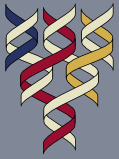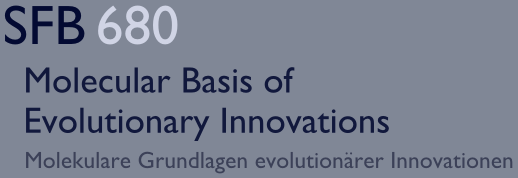Natural Variation and Evolution of a Gene Regulatory Network
Genes involved in trichome patterning are part of a gene network regulating five different traits: trichome and root hair patterning, anthocyanidin, seed coat pigment and seed coat mucilage production. To extent the network and to better understand the properties and adaptive value of these genes, we study their natural variation and evolution. A genome-wide association study is used to correlate phenotypic variation with gene function in Arabidopsis thaliana. The genetic and molecular analysis of these traits in Arabis alpina aims to understand the evolution of the gene regulatory network.
Molecular evolutionary analysis typically focus on individual genes with little attention to the interaction context. Studies on the evolution of networks as the other extreme are typically based on large scale transcriptomics or proteomics experiments. Experimental approaches on the evolutionary characterization of functionally well-defined regulatory networks are scarce. We study a gene network consisting of WD40, bHLH and MYB proteins in plants. In Arabidopsis thaliana this network regulates five traits including trichome and root hair patterning, anthocyanidin, seed coat pigment and seed coat mucilage production. The WD40 factor TTG1 regulates all traits, three bHLH factors regulate an overlapping subset of traits, five R2R3-MYB factors regulate each one single trait and R3-MYB factors contribute as additional factors to the network:
Several genes have close homologs with redundant functions. In the context of trichome and root hair development the involved genes are engaged in manyfold crossregulatory interactions with many feed back loops. This situation offers excellent possibilities to study the hierarchical constrains within the network and the origin of new subfunctions. Towards this end we take two approaches:

Genome Wide Association Mapping (GWAS)
We study natural variation in Arabidopsis thaliana ecotypes to learn which of the known genes cause variation in trichome and root hair patterning, anthocyanidin, seed coat pigment and seed coat mucilage production. In addition we conduct GWAS to identify new genes involved in the regulation of the five traits. The development of highly specified phenotyping and statistical analysis for the GWAS are done in collaboration with the Tresch*, Stich* and Schneeberger* groups.
In the frame of this project, in April 2013, our semi-automated method for 3D leaf reconstruction to analyze trichome patterning from light microscopic images was published by PLOS Computational Biology. This work was a tight collaboration with the Tresch group. The software is called TrichEratops*.

Genetic and molecular analysis of trichome and root hair development in Arabis alpina
One approach towards a mechanistic understanding of phenotypic changes is evolutionary developmental biology (also called Evo-Devo). Most of our knowledge is based on a few well-characterized model systems that are separated by large evolutionary distances. Therefore, evolutionary comparisons are often descriptive and have little functional depth. For a functional evolutionary comparison of developmental processes it is necessary to study clearly homologous processes in closely related species. In collaboration with the Coupland* lab we take a forward genetic approach to identify genes involved in trichome and root hair development in Arabis alpina.
*We do not take over responsibility for any external link.
Photography of all plants was done by S. Werth.
SEM pictures were generated by H.-P. Bollhagen and F. Nitsche (AG Büschges / Arndt / Bonkowski)

